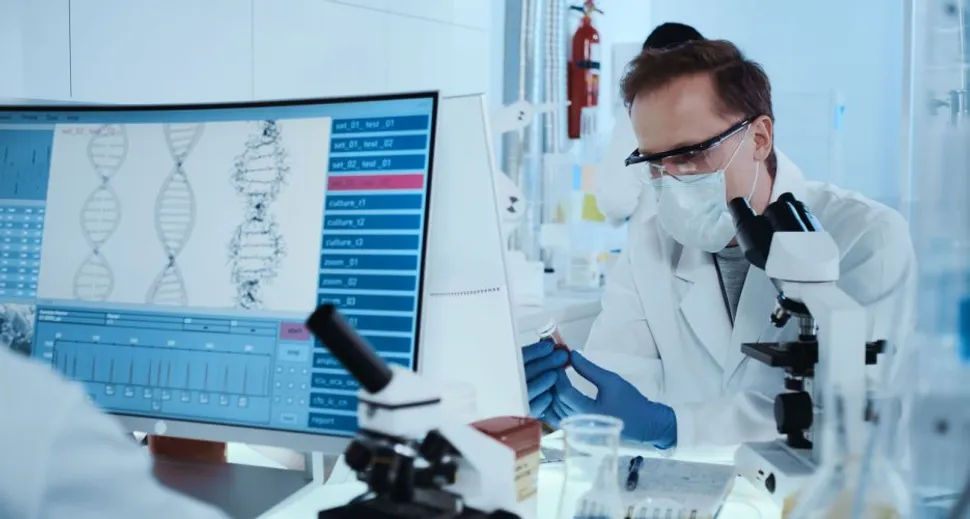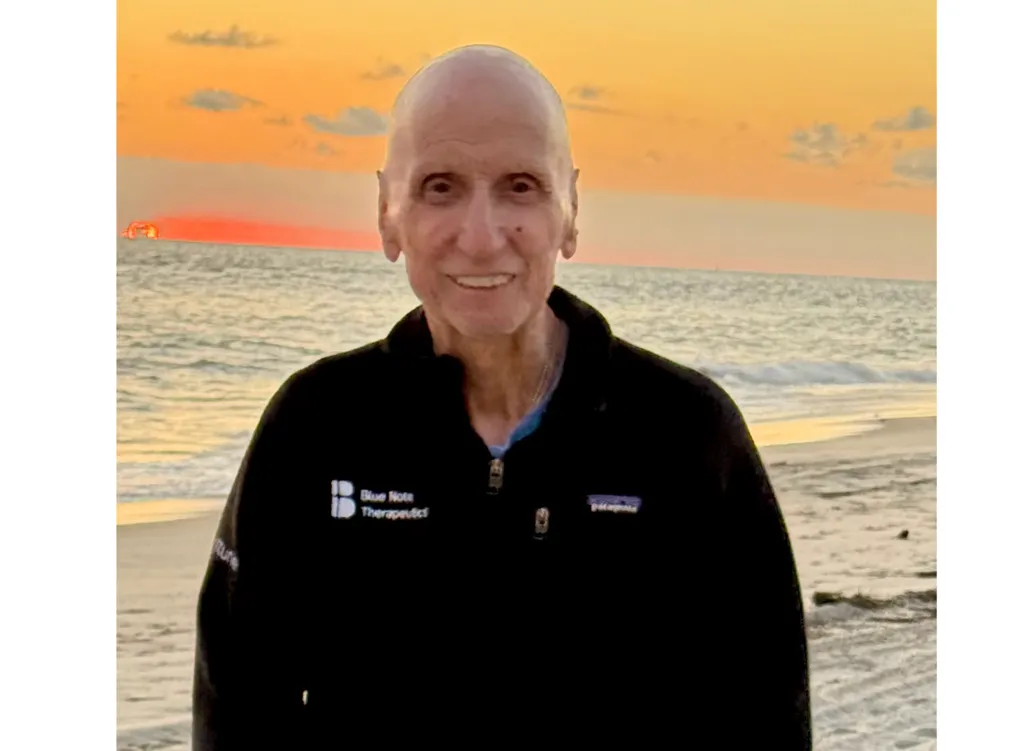Common Genetic Mutations Found In AML

Approximately 10,000 deaths in the United States are due to acute leukemias. “Acute myeloid leukemia (AML), in particular, is diagnosed in 3.5 per 100,000 adults yearly, with an increased incidence in the elderly population.” AML is complex and aggressive and occurs due to genetic mutations. These mutations allow for leukemic and preleukemic stem cells to form. These cells can then multiply and cause leukemia.
Here are some of the common genetic mutations that occur in AML:
FLT3
The FLT3 gene helps regulate cell survival and its reproduction. This mutation causes blood cells to multiply uncontrollably. It is the most common genetic change in AML. It starts in the bone marrow and moves to the blood. “The FLT3 gene contains instructions for a protein called FLT3, which helps white blood cells grow.” FLT3 inhibitor drugs (midostaurin, gilteritinib) are improving the outlook for patients with this mutation.
NPM1
Nucleophosmin (NPM), also known as nucleolar phosphoprotein B23 or numatrin, is a protein that is encoded by the NPM1 gene. NPM1 mutations occur in almost one-third of all AML cases. “The majority of NPM1 mutations are found in exon 12 and approximately 50 different NPM1 mutation types have been described with the most common being Type A, which involves a TCTG tetranucleotide duplication and accounts for 75–80% of all NPM1 mutations in AML”
IDH
“Isocitrate dehydrogenase 1 and 2 (IDH1 and IDH2) are key metabolic enzymes that convert isocitrate to α-ketoglutarate.” IDH1 occurs in approximately 20% of AML cases and causes abnormal cancer cells to grow and spread throughout the body. This mutation is also found in other forms of cancer, such as brain tumors and bone tumors. IDH1 mutations can appear along with a TP53 mutation.
TP53
Mutations in TP53 are present in approximately 10% of patients with AML. “TP53 is well known for its role as a tumor suppressor. It senses cellular stress or damage and in response stops cell division or initiates cell death, thereby preventing a damaged cell from reproducing. Mutation of this gene eliminates a key cellular fail-safe mechanism and is a step leading to cancer.” This mutation is associated with poor prognosis.
KIT
The KIT gene plays a key role in cell growth, differentiation and survival. It provides instructions for making the protein family called receptor tyrosine kinases. These proteins signal from the cell’s surface. It is also called CD117 and stem cell factor receptor.
NRAS
“The NRAS gene belongs to a class of genes known as oncogenes. When mutated, oncogenes have the potential to cause normal cells to become cancerous. The NRAS gene is in the Ras family of oncogenes, which also includes two other genes: HRAS and KRAS.” Mutations in NRAS often indicate resistance to chemotherapy. Patients with this gene change should not receive anti-EGFR drugs alone or in combination with chemotherapy.
Interested in finding a clinical trial focused on your AML mutation? Check out HealthTree's AML Clinical Trial Finder tool and utilize the advance filters.
Approximately 10,000 deaths in the United States are due to acute leukemias. “Acute myeloid leukemia (AML), in particular, is diagnosed in 3.5 per 100,000 adults yearly, with an increased incidence in the elderly population.” AML is complex and aggressive and occurs due to genetic mutations. These mutations allow for leukemic and preleukemic stem cells to form. These cells can then multiply and cause leukemia.
Here are some of the common genetic mutations that occur in AML:
FLT3
The FLT3 gene helps regulate cell survival and its reproduction. This mutation causes blood cells to multiply uncontrollably. It is the most common genetic change in AML. It starts in the bone marrow and moves to the blood. “The FLT3 gene contains instructions for a protein called FLT3, which helps white blood cells grow.” FLT3 inhibitor drugs (midostaurin, gilteritinib) are improving the outlook for patients with this mutation.
NPM1
Nucleophosmin (NPM), also known as nucleolar phosphoprotein B23 or numatrin, is a protein that is encoded by the NPM1 gene. NPM1 mutations occur in almost one-third of all AML cases. “The majority of NPM1 mutations are found in exon 12 and approximately 50 different NPM1 mutation types have been described with the most common being Type A, which involves a TCTG tetranucleotide duplication and accounts for 75–80% of all NPM1 mutations in AML”
IDH
“Isocitrate dehydrogenase 1 and 2 (IDH1 and IDH2) are key metabolic enzymes that convert isocitrate to α-ketoglutarate.” IDH1 occurs in approximately 20% of AML cases and causes abnormal cancer cells to grow and spread throughout the body. This mutation is also found in other forms of cancer, such as brain tumors and bone tumors. IDH1 mutations can appear along with a TP53 mutation.
TP53
Mutations in TP53 are present in approximately 10% of patients with AML. “TP53 is well known for its role as a tumor suppressor. It senses cellular stress or damage and in response stops cell division or initiates cell death, thereby preventing a damaged cell from reproducing. Mutation of this gene eliminates a key cellular fail-safe mechanism and is a step leading to cancer.” This mutation is associated with poor prognosis.
KIT
The KIT gene plays a key role in cell growth, differentiation and survival. It provides instructions for making the protein family called receptor tyrosine kinases. These proteins signal from the cell’s surface. It is also called CD117 and stem cell factor receptor.
NRAS
“The NRAS gene belongs to a class of genes known as oncogenes. When mutated, oncogenes have the potential to cause normal cells to become cancerous. The NRAS gene is in the Ras family of oncogenes, which also includes two other genes: HRAS and KRAS.” Mutations in NRAS often indicate resistance to chemotherapy. Patients with this gene change should not receive anti-EGFR drugs alone or in combination with chemotherapy.
Interested in finding a clinical trial focused on your AML mutation? Check out HealthTree's AML Clinical Trial Finder tool and utilize the advance filters.

about the author
Lisa Foster
Lisa Foster is a mom of 3 daughters and 1 perfect grandchild, a puzzle lover, writer and HealthTree advocate. She believes in the mission of the foundation and the team that builds it forward. She calls Houston, Texas home.
More on Navigating Your Health
Trending Articles

Get the Latest Acute Myeloid Leukemia Updates, Delivered to You.
By subscribing to the HealthTree newsletter, you'll receive the latest research, treatment updates, and expert insights to help you navigate your health.
Together we care.
Together we cure.
3x Faster.









